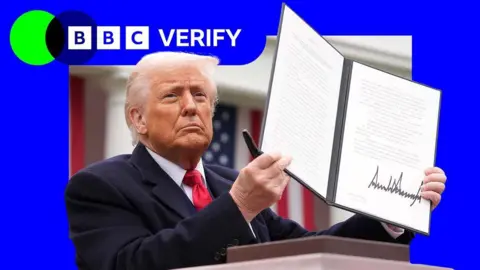On Wednesday, the US Court of International Trade delivered a significant ruling that challenges many of the tariffs instituted by President Donald Trump under the authority of the 1977 International Emergency Economic Powers Act (IEEPA). The court determined that the provisions of IEEPA did not extend sufficient power to the president to impose specific tariffs, particularly those aimed at curbing the smuggling of fentanyl into the United States from countries like Canada, Mexico, and China. These tariffs, introduced as part of Trump’s broader efforts to combat the opioid epidemic, are now under legal scrutiny.
The ruling primarily impacts tariffs associated with the “fentanyl” policies and the additional tariffs, collectively referred to as “Liberation Day” tariffs, which were enacted on April 2, imposing a universal 10% baseline tariff on imports to the US. However, not all tariffs imposed by the Trump administration were affected by this ruling. The court clarified that the 25% tariffs on steel and aluminum imports, as well as the additional tariffs on automobiles and parts, remain intact as they were implemented under separate legal justifications.
In a subsequent development, a US federal appeals court ruled that Trump’s broad tariffs could temporarily remain in effect while the White House appeals the trade court’s decision. This creates a precarious situation for Trump’s tariff agenda, which is now in limbo, pending further judicial review. The trade implications of this ruling are considerable, potentially altering the landscape of US trade negotiations.
Data from US Customs provides insight into the financial implications of the tariffs, particularly those struck down by the ruling. It revealed that tariffs targeting fentanyl smuggling had generated approximately $11.8 billion since February 2025. Furthermore, the 10% retrospective tariffs introduced in April yielded around $1.2 billion in revenue. On the other hand, unaffected tariffs such as the metal tariffs contributed about $3.3 billion, while the initial tariffs on China dating back to Trump’s first term accumulated a staggering $23.4 billion—revenue that is now safe from the court’s ruling.
Despite the potential revenue gains, analysts have forecasted the broader economic consequences of these changes. According to estimates by Goldman Sachs, the tariffs targeted by the court could have generated nearly $200 billion annually, indicating a significant loss in potential earnings for the US Treasury. In the wake of the court’s decision, the average external tariff rate is projected to fall from 15% to 6.5% this year, illustrating a dramatic shift in the trade climate.
This adjustment could have broader consequences for ongoing trade negotiations. Trump’s administration had leveraged these tariffs as negotiation tools to influence trade agreements with several nations, including the European Union (EU). However, the ruling may prompt countries like Japan and Australia to adopt a wait-and-see approach regarding their trade concessions, opting for caution before committing to deals with the US amidst the unfolding legal uncertainties.
Positioned against a backdrop of global trade dynamics, the initial reactions of stock markets to the court’s ruling have indicated a positive trajectory, yet a larger degree of uncertainty looms. Analysts suggest that Trump could pursue alternative legal pathways to reimplement tariffs under different provisions, such as Section 301 of the Trade Act of 1974, which allows measures against trading practices deemed unfair. This approach could include imposing new sectoral tariffs on industries like pharmaceuticals and semiconductors, contingent on different legal justifications.
The ongoing repercussions of Trump’s tariff policies continue to reverberate globally. The World Trade Organization (WTO) previously declared that the outlook for international trade had “deteriorated sharply” due to these tariffs, predicting a 0.2% decline in global merchandise trade in 2025—a downgrading from earlier growth projections. Should the court’s ruling remain in effect, it may offer a slight reprieve for global trade; nevertheless, the uncertainty surrounding the future of US tariffs, as articulated by economic analysts, suggests that the challenges associated with Trump’s tariff agenda are far from resolved.
In conclusion, while the court ruling has the potential to reshape the trajectory of tariffs imposed by the Trump administration, many experts warn that significant hurdles remain. Concerns about the implications for trade and economic growth persist, highlighted by statements from analysts who maintain that the broader objectives of Trump’s trade war are likely to endure.



